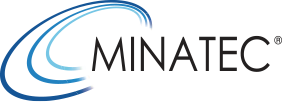News : Leti
January 01 2023
Study of the anisotropy of dopant and compositional gradients in the reference ternary alloy for infrared detection
This thesis concerns the field of HgCdTe infrared detectors for astrophysical applications, for which the Infrared Laboratory of CEA -Leti is a world leader. The student will join the infrared laboratory which includes the entire detector manufacturing process. He will produce the samples using the technological means of elaboration available in the Leti clean room. […] >>
January 01 2023
RF Cryo-CMOS/Superconductor circuits co-design
Quantum computing is nowadays a strong field of research at CEA-LETI and in numerous institutes and companies around the world. The Quantum Silicon Grenoble project, including CEA-LETI, CEA-IRIG and Néel Institut, aims to achieve a quantum computer based on quantum bits (qubits) in silicon. The operating conditions of qubits (cryogenic temperatures = 1K, high frequencies […] >>
January 01 2023
2D layers of chalcogenide materials growth by van der Waals epitaxy for frugal electronics
Non-volatile magnetic memories (MRAMs), such as STT-MRAMs (Spin-torque Transfer MRAMs), appear to be extremely promising devices for reducing the energy consumption of memories. In this context, a very strong spin-orbit coupling at room temperature has been demonstrated in 2D heterostructures of Tellurium-based chalcogenide materials opening the way to new energy-efficient devices. On the other hand, […] >>
January 01 2023
Development of Smart Beamforming Architectures for 6G Telecommunication Systems
Over the past 20 years, wireless communication systems have continued to evolve and offer new services. Today, the success is such that the frequency bands below 10GHz are saturated and we are now turning to millimeter band frequencies. These frequencies offer the possibility to develop systems with higher data rates. However, they require beamforming to […] >>
January 01 2023
Development of a fully passive plenoptic thermal imaging system
Uncooled thermal infrared cameras, based on the micro-bolometer technology, are present in several domains of application: industrial monitoring, automotive, automation, defense … To follow those high volume markets, there is a strong competition to develop more performant focal plane arrays, with smaller pixel pitch and including innovative optical functionalities. In this miniaturization context and optics […] >>



 Contact us
Contact us How to find us
How to find us







